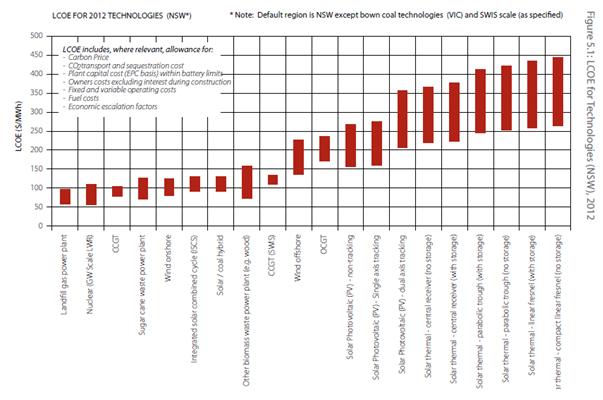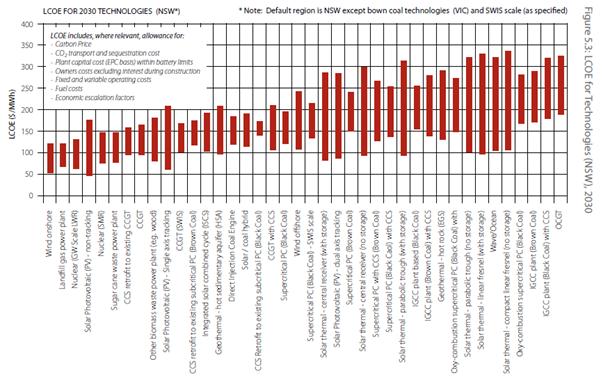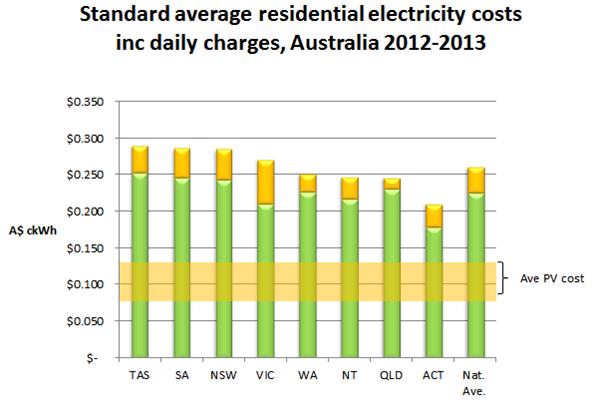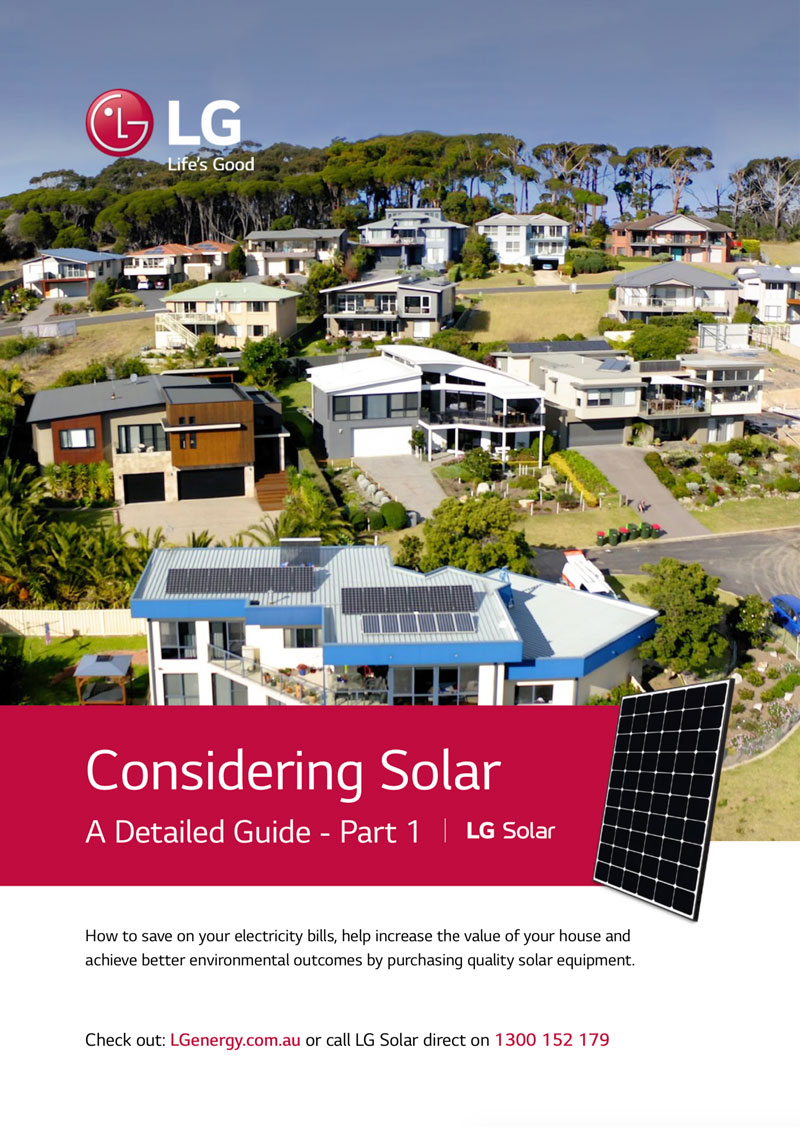How does solar energy compares to conventional energy?
The electricity market is an extordinarily complex system and thus, what energy costs and why is also a complex issue. If you want to understand more about the detail, the Senate Review into Electricity Pricing provides a long but very detailed explanation.
In broad terms, the cost of energy from all forms can be described in the following graphs which were released in mid-2012 by the Australian Bureau of Resources and Energy Economics. The first graph shows current (2012) costs, the second, projected costs by 2030. These figures are broad averages of a variety of applications and technologies.
These graphs describe solar power costs as:
- Between $0.15c kWh and $0.28c kWh in 2012
- Between $0.05c kWh and $0.20c kWh in 2030


However, we can also look at how solar energy costs compare to conventional energy costs at a household level.
The first thing to consider is that the cost of electricity from your solar system can be simply calculated by dividing the expected energy (in kWh) it will generate over its useful life (which is typically considered to be twenty years) by the cost of the system. If you are using finance that will change the equation and if you have to replace components like inverters, that will also change the equation. We also need to take into account degradation of the output over twenty years.
The simple calculation would look like this:
- Net cost of your system (the total installed cost) – say $4000 for 1.5kW
- The expected energy produced by the system over its twenty year life – 2,134kWh per year, less 0.5% degradation each year = 40,721kWh over twenty years
- Therefore the cost of generation from your solar system is 40,721 kWh/$4000 = $0.098c kWh. For the sake of the argument, let’s assume this could be plus or minus 20% and thus a range between $0.078 c/kWh and $0.117 c kWh.
Now I should stress this is a highly simplified calculation and it can move up or down depending on a variety of factors and assumptions but it highlights in generic terms why solar energy is so popular; it makes great cents!.
Now we have an idea of the cost of solar electricity we can compare it to conventional electricity.
Electricity rates vary depending on a number of factors including:
- The type of customer you are – e.g. residential, small business, large business etc.
- The type of contract you are on – e.g. flat rate, time of use rate, long or short term contract etc.
- The point in time – electricity rates vary each year, sometimes substantially
- Where you are located – electricity prices vary by state and sometimes region
- Who your supplier is – different suppliers have different rates and deals
Most business rates are negotiated, rarely disclosed and more complex so we will focus on residential electricity rates compared to solar energy generation costs. The Australian Energy Market Commission produced a report in late 2011 which described average retail electricity prices in each State which are an excellent guide to what to expect. It important to understand prices are made up of a combination of fixed costs (eg a daily charge to be connected) and energy costs (the cost per kWh for each kWh you use). Solar energy can generally only reduce your energy cost.
To demonstrate how residential electricity rates compare to solar energy generation costs, we have plotted the information on the graph below and included the range of solar generation costs that we calculated above. As you can see, in simple terms compared to the average energy costs solar energy can be generated at around half the price that you will buy conventional electricity for.
When the cost of generation from solar energy is equal to the cost of buying power from the grid network, this is often called “grid parity”.


